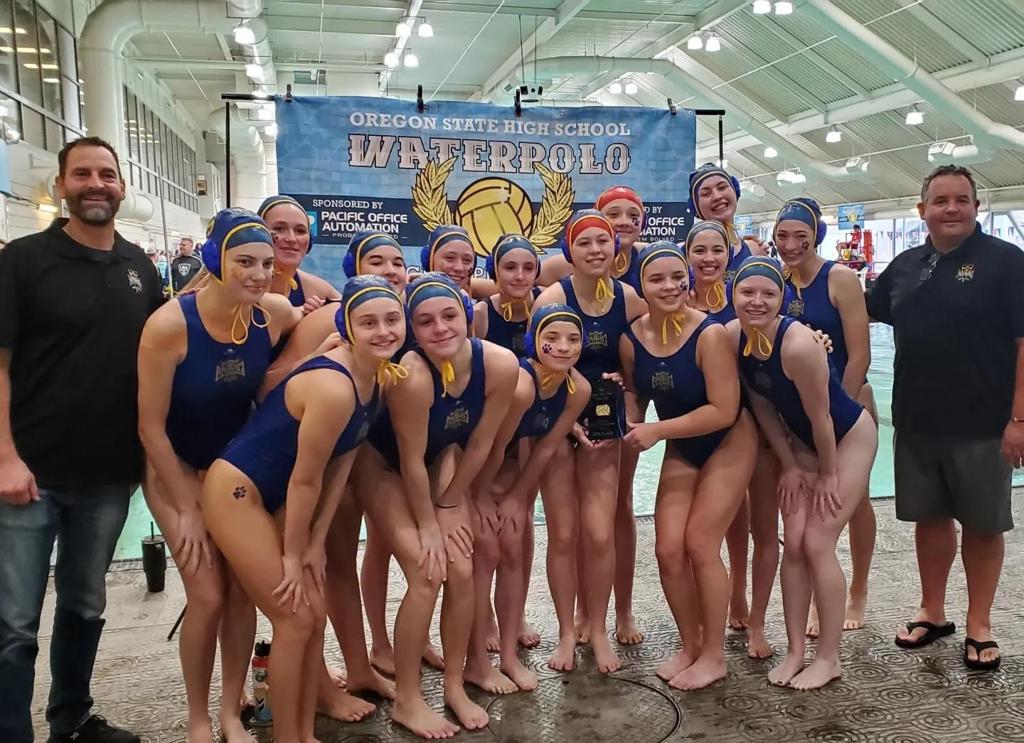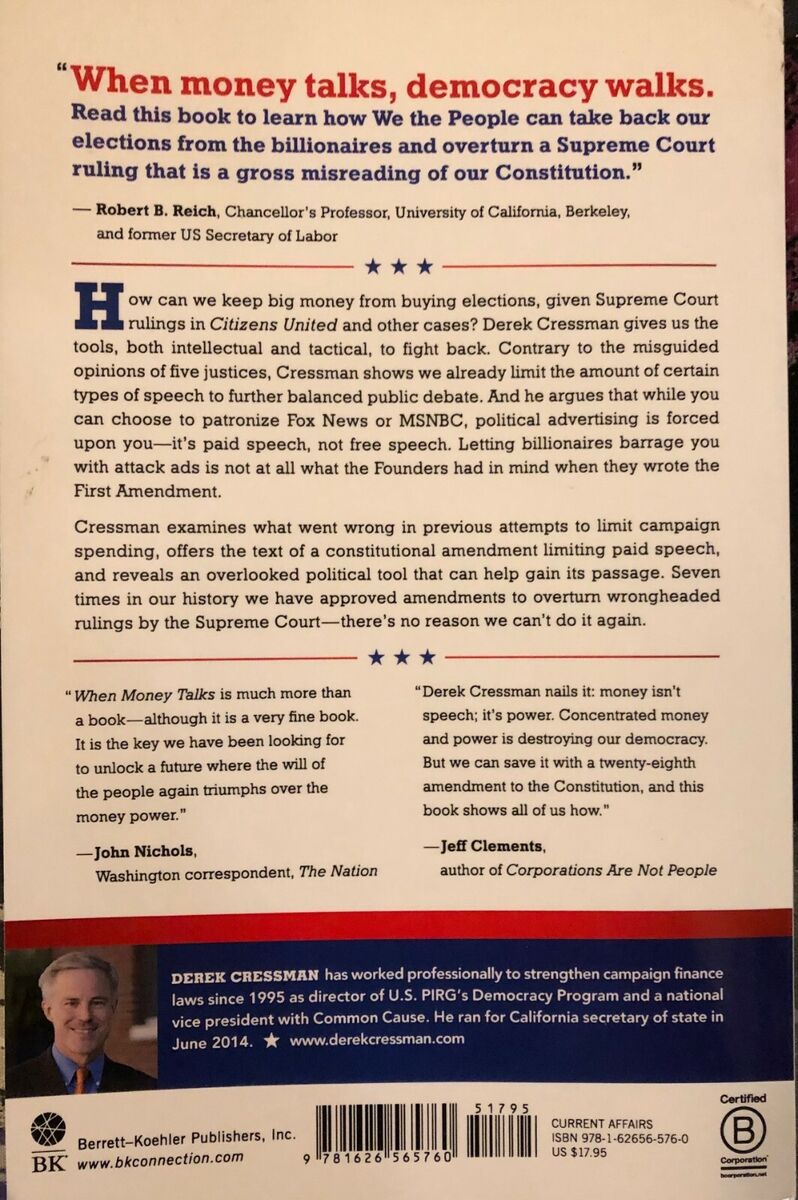NIL
AI is driving success at AAA Northeast
Artificial intelligence (AI) doesn’t just inform decisions at AAA Northeast, it has the keys and takes the wheel, says company president and CEO John Galvin ’91MBA. “We had to let some senior leaders go because they felt that data should just advise them,” says Galvin, who spoke to the Bryant community on March 28 about […]



Artificial intelligence (AI) doesn’t just inform decisions at AAA Northeast, it has the keys and takes the wheel, says company president and CEO John Galvin ’91MBA.
“We had to let some senior leaders go because they felt that data should just advise them,” says Galvin, who spoke to the Bryant community on March 28 about creating value from AI in business. “I think data is customers telling us what they need, so we need to let it drive us.”
That attitude is a far cry from the culture Galvin encountered when he arrived at AAA after a long career as chief financial officer at tour company Collette. “I didn’t even get a laptop — they didn’t believe in tech,” he says.
That all began to change about eight years ago when, under Galvin’s leadership, AAA partnered with Adobe as an alpha-test site for the company’s developing AI program. “We were popular with their product development team because we were in a lot of product lines they were interested in and had a lot of members and data,” recalls Galvin.
AAA’s diverse business includes providing roadside assistance, travel planning, and insurance. A not-for-profit corporation, AAA is a service-oriented company, so the top goal for AI integration was providing a personalized experience; others included optimizing marketing and tracking sales and cross-selling across product lines.
Galvin says a culture that accepts failure and constant testing has been necessary to build AAA’s AI infrastructure. “You’ve got to be innovative and creative to make this work,” he says.
Today, approximately 70 percent of new AAA memberships are generated online, and the company uses AI for near-constant monitoring of customer activity, says Lisa Melton, chief marketing officer at AAA Northeast. “We have a digital-first mindset,” she says.
“We have a digital-first mindset.”
“We used to flood people with marketing, and overwhelmed them,” Melton says. “We took our entire marketing team in-house and used AI to optimize our marketing on a near real-time basis. There are a lot of things our members don’t know about us, but now we can see who, what, and how about how prospects are converted to sales.”
Melton is a believer in following the lead of AI in marketing because it allows her to see the process and results “from start to finish,” she says.
Mark Pelletier, AAA’s senior vice president for digital business strategy and e-commerce, says the company can now look at data anomalies and adapt to them daily. “It gives us the ability to act quickly,” he says.
AI provides AAA with trends analysis and generates customer profiles based on millions of data points gathered from interactions via the Internet, phone, mail, call center, purchases, and the company’s CRM system. It’s used to predict the success of individual marketing campaigns, target e-mail marketing, and improve internal workflow.
On the membership side, “We can tell [agentic] AI to go find people you think want to join AAA,” says Pelletier. AI-driven predictive algorithms and propensity models have yielded insights like the fact that Gen Z members living in urban areas like to rent cars for daily living, not just on vacation.
“We can tell AI to go find people you think want to join AAA.”
Interestingly, however, AAA has not employed generative AI in the form of a chatbot, which Galvin says runs counter to the goal of delivering personalized service.
Galvin’s MBA alma mater has aided in AAA’s success. Bryant students in the “Big Data Analytics and Data Science” capstone courses taught by Suhong Li, Ph.D., chair of the Information Systems and Analytics Department, have for several years used large data sets from AAA to profile and segment members based on demographic information and their history of interacting with the company.
Student projects also have helped AAA identify cross-selling opportunities, predict the likelihood of membership cancellation, estimate the probability of members purchasing AAA insurance products, forecast annual travel sales, and predict customer propensity for booking cruises, says Li.
Pelletier admits that the company has become “wholly dependent” on AI, and Galvin says, “we would need an army of analysts if we didn’t have AI.”
“We would need an army of analysts if we didn’t have AI.”
The bottom-line result of the lap of faith with AI, however, has been $200-million growth in AAA’s travel business.
Galvin says employees of companies that fully integrate AI into their operations need to adapt to the technology, not fear it. Pelletier told Bryant students and faculty that AAA is looking for job applicants who are familiar with data and can be trained but, more importantly, are “naturally inquisitive, like teamwork, and are comfortable with failure.”
“We still need people to guide AI, not set and forget it,” he says.
NIL
Terps Lose Regular Season Finale To No. 20 Nebraska, 9-1
LINCOLN, NE – Maryland softball lost its regular-season finale against No. 20 Nebraska, 9-1, at Bowlin Stadium on Sunday afternoon. Maryland finished the season 18-31 overall and 3-19 in Big Ten play. Nebraska (38-12, 17-5 Big Ten) used a four-run opening inning to supply its lead it would never relinquish to Maryland. […]
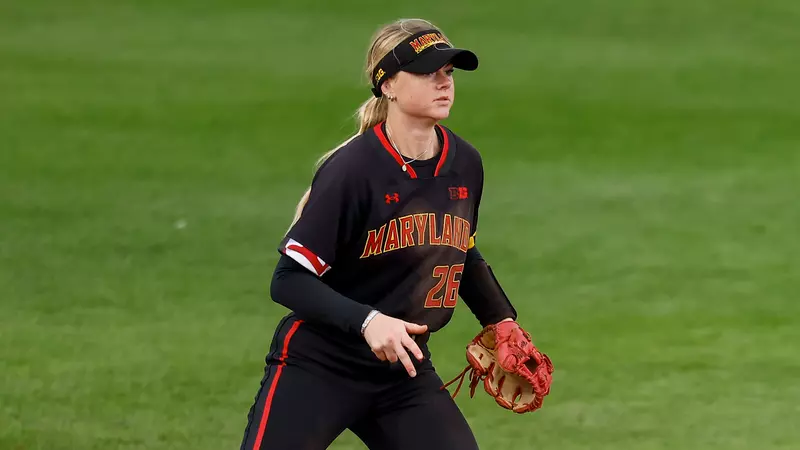
LINCOLN, NE – Maryland softball lost its regular-season finale against No. 20 Nebraska, 9-1, at Bowlin Stadium on Sunday afternoon. Maryland finished the season 18-31 overall and 3-19 in Big Ten play.
Nebraska (38-12, 17-5 Big Ten) used a four-run opening inning to supply its lead it would never relinquish to Maryland. The Huskers added runs in the second (two runs) and third (one run) before hitting a game-winning two-run homer in the sixth.
The Terps scored their lone run in the fifth inning, with Julia Shearer reaching home plate on a wild pitch. The Terps had additional runners in scoring position, but were unable to plate any more runs.
Shearer, Mariah Penta, and Sammi Woods were the only batters to record a hit for Maryland.
Bri Godfrey opened up the game in the circle for the Terps. Julia Shearer and Keira Bucher each made a relief appearance out of the bullpen.
Breaking Down The Action
- Nebraska took a 4-0 lead in the opening inning of play. Highlighted by a lead off homer by Jordyn Bahl.
- The Huskers extended their lead to 6-0 in the second, off two RBI doubles.
- Nebraska hit a RBI single, adding a run in the bottom of the third.
- Maryland scored its first run in the fifth, making it a 7-1 game. Julia Shearer reached home plate on a wild pitch.
- Nebraska added a game-ending two-run homer in the bottom of the sixth, securing a 9-1 victory.
NIL
President Donald Trump mulls executive order on college football NIL payments after Nick Saban meeting: report
One of President Donald Trump’s forthcoming executive orders could target NIL payments in college football after he met with former Alabama head coach Nick Saban. President Trump is considering an executive order “that could increase scrutiny of the explosion in payments to college athletes since 2021,” according to The Wall Street Journal. That comes after […]
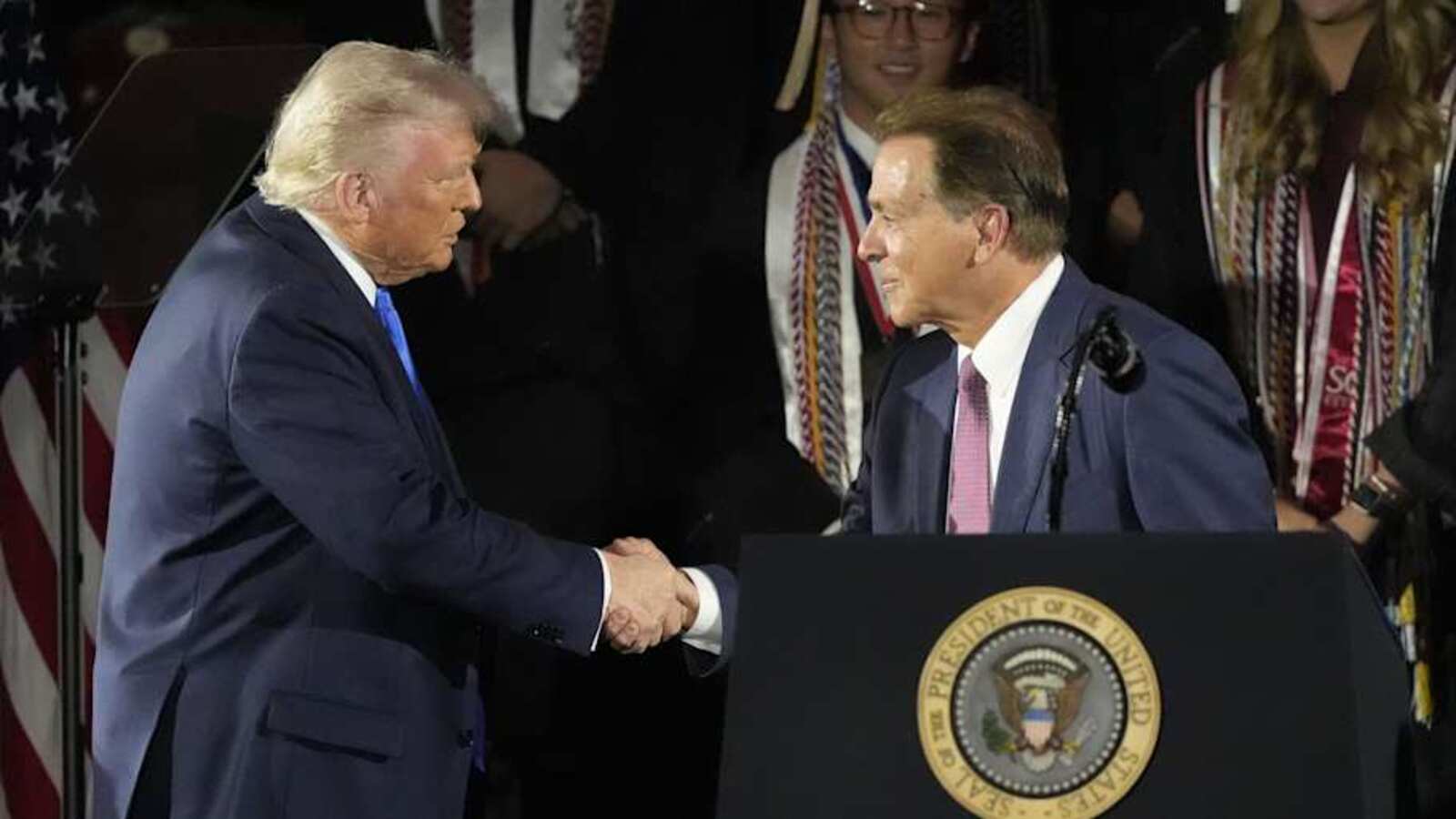
One of President Donald Trump’s forthcoming executive orders could target NIL payments in college football after he met with former Alabama head coach Nick Saban.
President Trump is considering an executive order “that could increase scrutiny of the explosion in payments to college athletes since 2021,” according to The Wall Street Journal.
That comes after a meeting between the President and Saban at the University of Alabama commencement address in recent days.
Saban, college football’s record-holder seven-time national champion head coach, supports NIL as a concept, but has criticized the way in which the policy has been implemented nationwide.
Saban has referred to the existing NIL model in college football as unsustainable, as it creates a sharply uneven playing field between schools with more resources and those with less.
President Trump said he agreed with Saban and would look at creating an executive order, going as far as asking aides to study what a prospective order would say on the subject.
Like most executive orders, for it to really stick legally, the President would likely need the U.S. Congress to get directly involved and hash out the details in a piece of federal legislation.
Opinion is split among lawmakers regarding how to handle the situation, but one piece of legislation has been proposed that could completely change the system.
Rep. Michael Baumgartner, a Republican from Washington state, has proposed H.R. 2663, the “Restore College Sports Act,” which seeks to replace the NCAA entirely with a new body headed by a commissioner that is appointed by the President of the United States.
The bill also proposes that players be allowed to transfer freely, and that NIL funds and revenues be shared with schools and distributed “equally among all student athletes of such institutions.”
A potential order on NIL payments comes at a time when the landmark House vs. NCAA case is expected to be resolved soon, the decision of which will formally permit colleges to pay athletes directly, with football players expected to receive the bulk of that revenue.
(WSJ)
—
Read
NIL
Trump mulls order on college football NIL deals after Nick Saban meeting: report
One of President Donald Trump’s forthcoming executive orders could target NIL payments in college football after he met with former Alabama head coach Nick Saban. President Trump is considering an executive order “that could increase scrutiny of the explosion in payments to college athletes since 2021,” according to The Wall Street Journal. That comes after […]
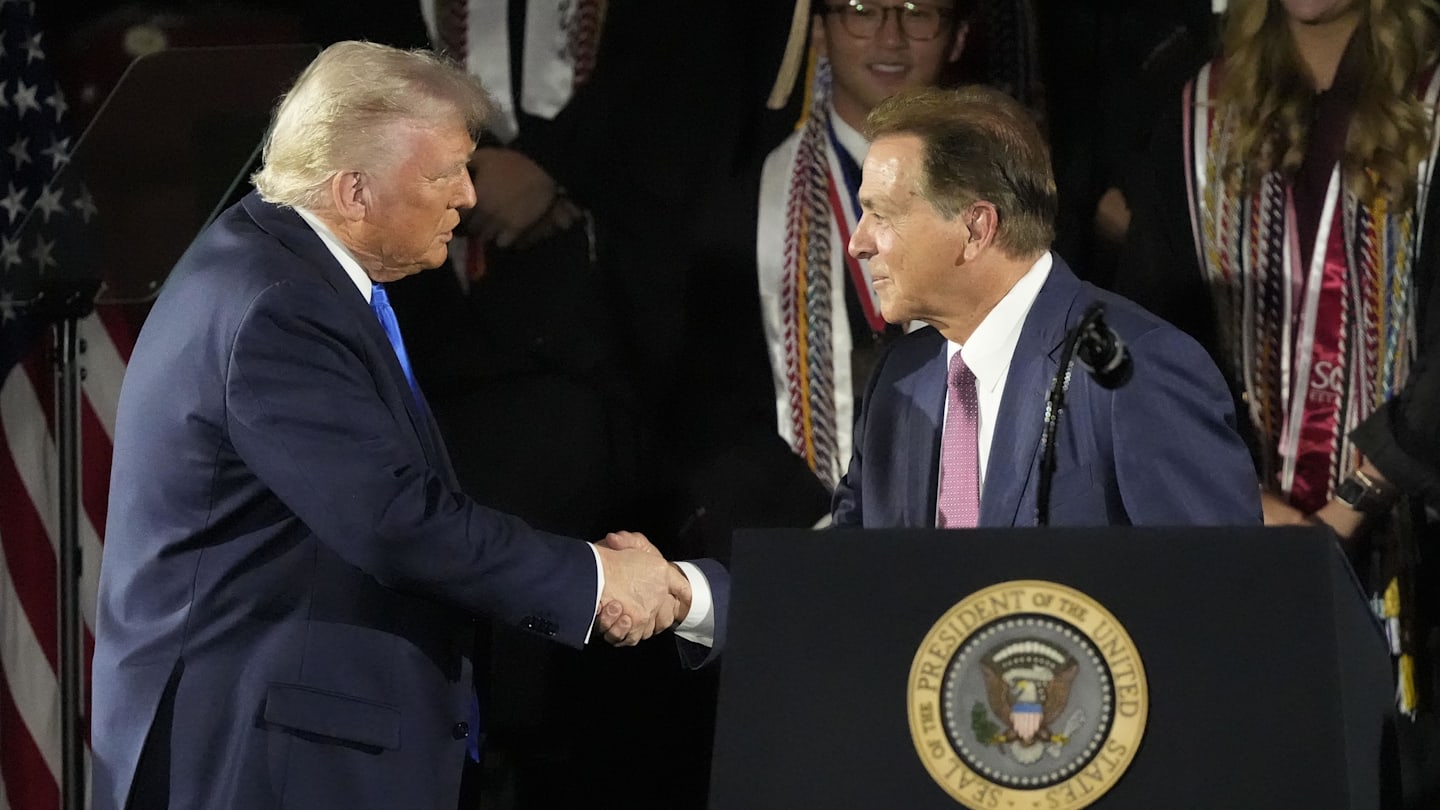
One of President Donald Trump’s forthcoming executive orders could target NIL payments in college football after he met with former Alabama head coach Nick Saban.
President Trump is considering an executive order “that could increase scrutiny of the explosion in payments to college athletes since 2021,” according to The Wall Street Journal.
That comes after a meeting between the President and Saban at the University of Alabama commencement address in recent days.
Saban, college football’s record-holder seven-time national champion head coach, supports NIL as a concept, but has criticized the way in which the policy has been implemented nationwide.
Saban has referred to the existing NIL model in college football as unsustainable, as it creates a sharply uneven playing field between schools with more resources and those with less.
President Trump said he agreed with Saban and would look at creating an executive order, going as far as asking aides to study what a prospective order would say on the subject.
Like most executive orders, for it to really stick legally, the President would likely need the U.S. Congress to get directly involved and hash out the details in a piece of federal legislation.
Opinion is split among lawmakers regarding how to handle the situation, but one piece of legislation has been proposed that could completely change the system.
Rep. Michael Baumgartner, a Republican from Washington state, has proposed H.R. 2663, the “Restore College Sports Act,” which seeks to replace the NCAA entirely with a new body headed by a commissioner that is appointed by the President of the United States.
The bill also proposes that players be allowed to transfer freely, and that NIL funds and revenues be shared with schools and distributed “equally among all student athletes of such institutions.”
A potential order on NIL payments comes at a time when the landmark House vs. NCAA case is expected to be resolved soon, the decision of which will formally permit colleges to pay athletes directly, with football players expected to receive the bulk of that revenue.
(WSJ)
—
NIL
How NIL is widening the basketball gap between Power Five schools and mid-majors – The Statesman
A graphic illustrating a basketball sitting in a hoop surrounded by the names of major collegiate athletic conferences, repeated NIL text and money. NIL deals are impacting student-athletes’ priorities, influencing decisions on professional goals and financial opportunities. ILLUSTRATED BY HENNA JEONG/THE STATESMAN In the 2025 NCAA Division I men’s basketball tournament, also known as “March […]


In the 2025 NCAA Division I men’s basketball tournament, also known as “March Madness,” the Elite Eight consisted of the top seed from all four regions, with the second seed from three of the four regions and third-seeded Texas Tech.
For the first time since the tournament expanded to 32 teams in 1975, the Sweet Sixteen featured teams only from the Power Five conferences, which include the Atlantic Coast Conference (ACC), Big Ten Conference (Big Ten), Big 12 Conference (Big 12), Pacific-12 Conference (Pac-12) and Southeastern Conference (SEC).
March Madness, particularly on the men’s side, has long been defined by Cinderella stories and unforgettable upsets, where lower-seeded teams — often hailing from mid-major leagues — defy the odds and capture the hearts of fans nationwide. This unpredictability has been the tournament’s allure: a thrilling ride where anything is possible.
In the past decade, there have been two remarkable Cinderella runs. In 2022, 15th-seeded Saint Peter’s from the Metro Atlantic Athletic Conference reached the Elite Eight, stunning second-seeded Kentucky (SEC), seventh-seeded Murray State and third-seeded Purdue (Big Ten), respectively, en route.
In 2018, 11th-seeded Loyola Chicago — then representing the Missouri Valley Conference — and the iconic Sister Jean survived and advanced all the way to the Final Four, downing sixth-seeded Miami (ACC), third-seeded Tennessee (SEC), seventh-seeded Nevada and ninth-seeded Kansas State (Big 12), respectively, on the way.
With the absences of Cinderellas and a general lack of upsets in this year’s March Madness, it is time to examine a possible correlation to the most significant shift in collegiate athletics since the Peacocks’ miraculous run: NIL.
What is NIL and how does it specifically benefit Power Five schools?
NIL, which stands for “name, image and likeness,” refers to an individual’s legal entitlement to control the commercial use of their personal brand. Historically, college athletes were prohibited from capitalizing on their fame financially, effectively forfeiting their NIL rights when they committed to collegiate sports programs. However, nearly four years ago, a combination of NCAA regulatory changes and state legislation reinstated these rights, empowering student-athletes to enter into lucrative sponsorship agreements.
Power Five schools, with their expansive resources, extensive media visibility and well-established networks, are uniquely positioned to attract high-value opportunities. While student-athletes are currently not allowed to be paid by their schools, this could change soon as well. The NCAA’s Division I Board of Directors has approved proposed changes contingent on the landmark $2.8 billion House v. NCAA settlement — a consolidated lawsuit brought by athletes challenging restrictions on their ability to profit from NIL. If finalized, the plan would allow schools to distribute up to $20.5 million annually to student-athletes.
At the end of 2024, CNBC unveiled a list of the 75 wealthiest college sports programs. Among the schools listed, only six were not members of the Power Five conferences. All six of these institutions ranked 67th or higher in the ranking and came from just three leagues: the American Athletic Conference (AAC), the Mountain West Conference and the Big East Conference.
Since the introduction of NIL in 2021, recruiting for Power Five schools has become decidedly easier, surpassing their previous advantages. These programs possess an unparalleled ability to attract elite recruits, primarily due to their capacity to offer financial stakes that smaller institutions simply cannot match. This process is further facilitated by influential boosters, alumni and local businesses, whose elevated assets are especially concentrated within Power Five schools; this provides an additional competitive edge in the hunt for top-tier recruits and the biggest names in the transfer portal.
How has NIL impacted the current state of the transfer portal, which legendary basketball figure Dick Vitale describes as the “wild west”?
The NCAA transfer portal, established in 2018, serves as a compliance tool designed to streamline and manage the process for student-athletes transferring between member institutions. Its primary purpose is to provide greater transparency and allow athletes to publicly express their intent to switch schools.
The men’s basketball portal has reached an unprecedented level of relevance and activity in its current state. Even before the 2025 Final Four kicked off, several highly-coveted players — often seeking better financial opportunities these days — had not only entered the portal but already committed to new schools. While in many of these cases, student-athletes are making moves from one Power Five program to another, there are exceptions involving mid-major programs, with the move often negatively impacting them.
A prominent example of a player from a prosperous mid-major program being poached by a Power Five school is Johnell Davis. The combo guard spent four seasons at Florida Atlantic University (FAU) of the AAC, where he played a pivotal role in the program’s most successful campaign ever in 2022-23. Davis was the leading scorer for an Owls team that made an unexpected run to the Final Four as a ninth seed. After FAU returned to March Madness the following year, Davis transferred to Arkansas to play for legendary coach John Calipari this past season.
While transfers for a player’s fifth year are not uncommon, Davis’ move came amidst a broader exodus from FAU. The Owls suffered the exits of their other four starters and their sixth man coming into this campaign, with two of those players exiting through the transfer portal while the others graduated after the departure of head coach Dusty May, who took over Michigan’s program after six seasons with FAU. Consequently, the Owls, who posted a remarkable 60-13 combined record across the 2022-23 and 2023-24 campaigns, saw a dramatic decline this year, finishing with an 18-16 record.
The advent of the transfer portal, hinged on the rise of NIL, has made it extremely challenging for mid-majors to experience sustained success. Since the implementation of NIL, there has been a noticeable shift in student-athletes’ priorities, with many seemingly opting to sacrifice playing time at more historically prestigious programs and potentially jeopardizing their professional prospects in exchange for higher financial incentives.
From an individual standpoint, this decision is understandable, particularly for those not pursuing a professional basketball career. However, on a broader scale, this trend contributes to a growing disparity in talent across the NCAA, exacerbating an ever-widening gap that threatens to further destabilize the competitive balance in collegiate basketball.
What is the NCAA’s Division I Basketball Performance Fund, and how does it contribute to the growing discrepancy between Power Five schools and mid-majors?
The NCAA earns most of its annual revenue from two main sources: television and marketing rights, and championship tournaments. For the 2024 fiscal year, the organization generated $1.38 billion, with a major portion coming from March Madness. The men’s basketball tournament alone accounted for more than $900 million.
Last year, the NCAA distributed its revenue across nine areas, including allocating $171,242,775 to the “Basketball Performance Fund.” According to the organization’s website, this fund is “distributed to Division I conferences and independent schools based on their performance in the men’s basketball tournament over a six-year rolling period.”
Leagues earn “units” based on how far their teams advance in the NCAA Tournament. Each unit is valued at $340,000 and is paid out over six years, increasing by 3% annually. Reaching the championship game — which requires five wins — earns a conference five units, or approximately $1.7 million. Thanks to Florida and Houston making the finals in the 2025 edition of March Madness, the SEC and Big 12, respectively, secured about $11 million to be paid out over time.
While Power Five institutions typically distribute large payouts directly to their member schools, mid- and low-majors rely on unit revenue to fund their operations. Even a decade ago before NIL’s arrival, more prosperous leagues were already dominating these earnings. Between 2009 and 2013, just six of all the Division I conferences — which were 32 at the time — captured 64% of all profits distributed through the Basketball Performance Fund.
The NCAA does also allot money through the “Equal Conference Fund,” which distributes funds “equally among Division I basketball-playing conferences that meet athletic and academic standards to play in the men’s basketball tournament.” However, the Equal Conference Fund totaled just $54,797,687 in 2024 — a 68% decrease compared to the Basketball Performance Fund.
Where does Stony Brook stand within this issue’s realm?
The Coastal Athletic Association (CAA) — Stony Brook’s current conference — is widely regarded as a low-major. Among the 31 Division I men’s basketball conferences, the CAA ranked 15th in the 2024-25 Rating Percentage Index as compiled by TeamRankings.com. Four of the five Power Five conferences occupy the top five in these rankings. Meanwhile, the Pac-12 finds itself in a period of transition following the departure of eight teams in response to the conference’s inability to secure a lucrative media rights deal capable of competing with the financial powerhouses of the Big Ten and SEC, which would have led to reduced revenue for those programs.
Stony Brook Athletics has just two third-party organizations facilitating NIL opportunities for its student-athletes: The 1957 Club and the CR97 Fund, the latter of which solely supports the men’s basketball team. While the financial impacts of these initiatives remains unclear since NIL deals are private transactions and not publicly disclosed, they may have contributed to the Seawolves’ most high-profile transfer acquisition since the inception of NIL: guard Joe Octave.
For his graduate year, Octave — a 2023-24 Third-Team All-Patriot League selection for Holy Cross — chose Stony Brook, which was in desperate need of experienced talent after losing four starters to graduation and its sixth man to the portal. That sixth man, center Keenan Fitzmorris, was financially lured away by Northwestern. The big man played just 9.2 minutes per game this past season for the Big Ten team, which finished with the fourth-worst record in conference play within the Power Five league.
Unfortunately for the Seawolves, things also did not work out on their end with Octave. A lower-body injury sidelined him for the team’s final 11 regular season games as well as the 2025 CAA Championship, where Stony Brook was eliminated in the First Round. Even when Octave was healthy, his shooting struggles were evident. While he averaged a respectable 13.3 points per game, it came with career-low shooting percentages from the field (.351) and three-point range (.208).
Octave’s absence paved the way for some revelations, most notably guard C.J. Luster II and forward Andre Snoddy, who emerged as the Seawolves’ standout performers during the 2024-25 campaign. However, the two are now on their way out. Luster II has transferred to the University of North Carolina Wilmington, the CAA’s reigning champion and one of the conference’s leaders in NIL initiatives alongside Charleston. Conversely, Snoddy is currently in the transfer portal despite having already exhausted his eligibility, aligning himself with a wave of athletes in a similar limbo. They remain hopeful that ongoing litigation will compel the NCAA to revise its eligibility regulations, although the organization maintains that no such discussions are currently taking place.
Not aided by the aforementioned departures, Stony Brook finds itself in a significantly disadvantageous position, both now and in the foreseeable future. The program is in the midst of a rebuild after enduring its worst season in 17 years, grappling with both internal challenges surrounding coaching and player development along with the NCAA’s ever-evolving landscape. The institution’s limited NIL influence severely hampers its ability to attract the talent — whether from the transfer portal or incoming freshman — needed to spark a turnaround and regain competitive relevance.
NIL
Tennessee Football Miss on Another Wide Receiver in the NCAA Transfer Portal
The Tennessee Volunteers have missed on another wide receiver in the transfer portal. The Tennessee Volunteers have still yet to land a portal wide receiver, with that position being one of the biggest needs on the roster. Tennessee has been targeting wide receivers from all over the country, and most of their targets have completely […]
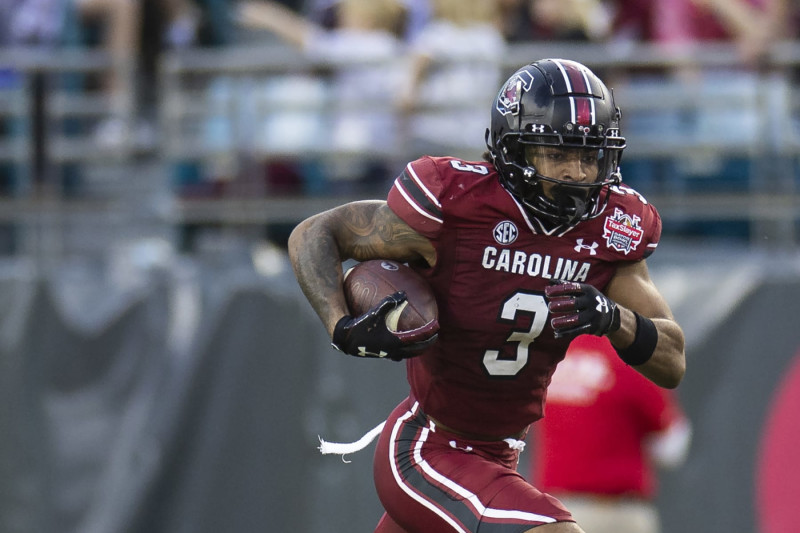
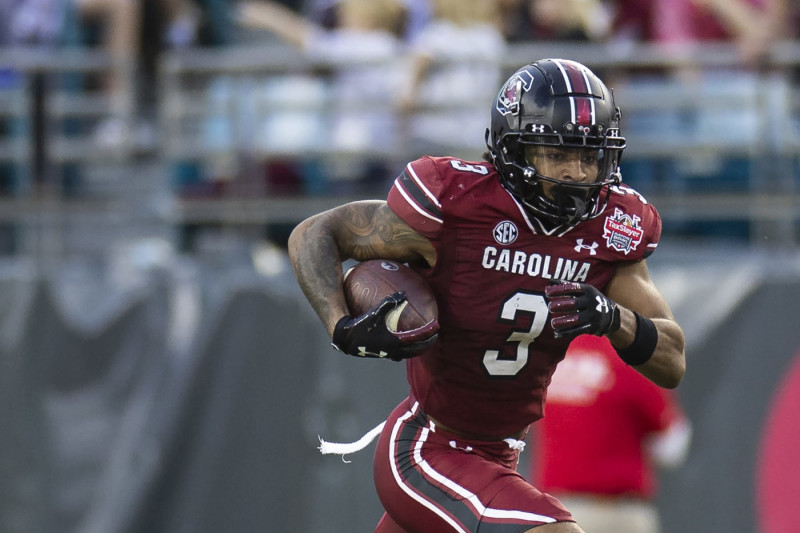

The Tennessee Volunteers have missed on another wide receiver in the transfer portal.
The Tennessee Volunteers have still yet to land a portal wide receiver, with that position being one of the biggest needs on the roster. Tennessee has been targeting wide receivers from all over the country, and most of their targets have completely gone off the board after committing elsewhere.
BREAKING: Cal transfer WR Jonathan Brady has Committed to Indiana, he tells @on3sports
The 5’10 180 WR totaled 97 receptions for 1,460 total yards & 11 TDs through 3 seasons
Will have 1 year of eligibility remaining https://t.co/RlUbB6EMhS pic.twitter.com/JX7PGJaFxd
— Hayes Fawcett (@Hayesfawcett3) May 4, 2025
Tennessee was targeting 5-foot-10 California wide receiver transfer Jonathan Brady, but unfortunate news for the Vols would strike again as Brady would commit to the Indiana Hoosiers. This news comes after they missed out on many targets, including Keelan Marion, who opted to commit to Miami instead.
Tennessee has a very thin room with the wide receivers because of the lack of depth. The Vols lost two receivers to the draft and seven receivers to the transfer portal. The Vols will likely continue to look for portal options, but the time is limited as the summer and fall quickly approach.
Follow Our Social Media Pages:
• Follow Tennessee on SI on Twitter: @VolsOnSI
• Follow Tennessee on SI on Facebook: @VOLS on SI
Follow Our Staff:
Follow Our Website
Make sure to follow our website Tennessee on SI.
OTHER TENNESSEE NEWS
NIL
Michigan Accused of Hiding NIL Funds as $12M Bryce Underwood Move Puts Sherrone …
What is it like earning paychecks worth 7 – or even 8-figures when you’re barely 20 years old? Those are the numbers some elite college football players are making these days, as NIL deals continue to change the face of college football. It’s become such a prominent aspect of the inner workings of the sport […]
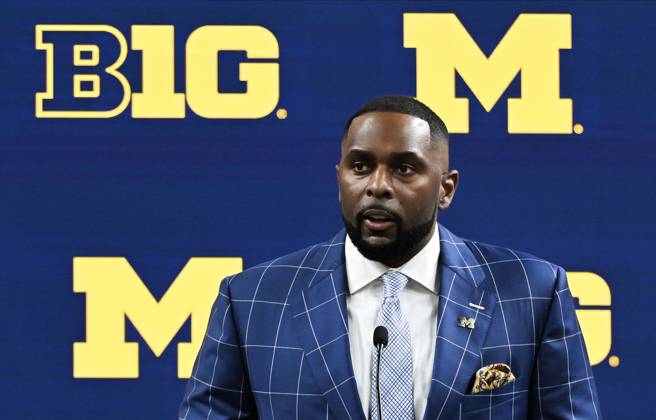
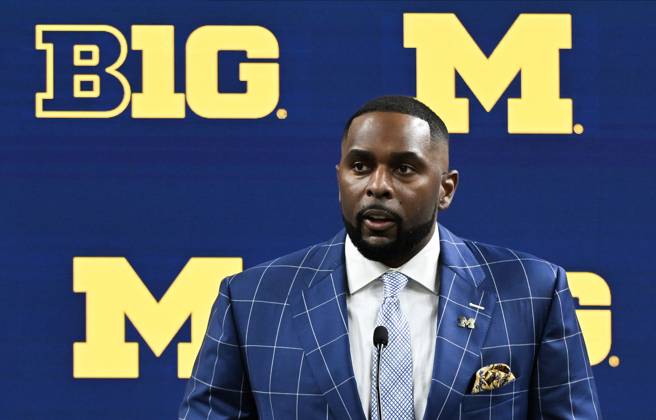

What is it like earning paychecks worth 7 – or even 8-figures when you’re barely 20 years old? Those are the numbers some elite college football players are making these days, as NIL deals continue to change the face of college football. It’s become such a prominent aspect of the inner workings of the sport because of those flashy numbers. Arch Manning is being paid $6 million, Carson Beck is getting $4 million, and the list goes on. This off-season, the most protracted player saga saw Bryce Underwood flip his commitment from LSU to sign with Sherrone Moore’s Wolverines following a reported $12.5 million NIL deal over four years. Backed by Oracle co-founder Larry Ellison, Michigan was able to secure the 5-star quarterback as the program made a statement of intent.
The offseason for Michigan has been shaped by Moore embracing the NIL culture. Apart from Underwood, top-tier signees like five-star offensive tackle Andrew Babalola, and top-100 prospects Ty Haywood, Nate Marshall, and Shamari Earls have all landed in Ann Arbor on the back of lucrative NIL deals. In fact, Babalola holds the third-highest NIL valuation on Michigan’s roster, with $711k. So, given their lavish outlay, you would expect Sherrone Moore and Co. to feature among the elite group of programs as far as NIL collectives go. But it appears that’s not the case.
The workings of NIL rights and compensation are still not fully known to the public. NIL collectives, which run the show, have various ways of sourcing funds. They’re set up with the agenda of providing ‘opportunities’ for college athletes. Crain & Company discussed the top 10 richest NIL collectives on May 2, which surprisingly – and suspiciously – misses Michigan.
Topping the list is 1870 Society & The Foundation, which supports Ohio State. Their top prospect is obviously Jeremiah Smith, who is getting a yearly payout of $4 million at the moment. But glaringly missing from the list was Michigan. After all, they’re paying Bryce Underwood $12 million. Their absence led the hosts to raise their suspicions. “Michigan spent what, 12 million on just one quarterback and they can’t crack into the top 10? That’s why I’m not buying any of this,” said David Cone. He also joked, “Portnoy is probably going to get on the phone, and say, ‘Look, we gotta pump these numbers up.’” David Portnoy, owner of Barstool Sports, is a member of the collective that funds Michigan.
Bryce Underwood’s much-talked-about recruitment campaign is a textbook example of NIL-influenced ones. He was getting 1.5 million at LSU yearly. And then, Michigan drops a mic-drop package of $12 million, and Underwood happily jumped ship from LSU. His campaign, which featured the presence of the shunned-upon Connor Stalions, was funded by the Champions Collective. And the key personnel behind this coup? It was none other than Oracle co-founder Larry Ellison and his wife, Jolin. Michigan is her alma mater, and she’s extremely “passionate” about the school’s athletics. Ellison is worth a whopping 230 billion, and Underwood is in his first stint in college sports.
Trending Articles
- Savannah James & Family Not in Sight as Bryce James Finalizes Decision That Saves Millions for LeBron
- Kirby Smart Pressured to Fire $3.1M Assistant Coach to Save Program After Georgia HC Reminded of Worst Nightmare
- Boxing Community Joins Manny Pacquiao in Mourning as Coach Loses Cancer Battle Despite Last-Minute Efforts
Despite these numbers, Michigan is nowhere in the top ranking lists. Host Blain Crane said that if the QB is getting paid that much, “You [Michigan] got more money.” Cone then said, “You don’t think they’re spending money? I just think they’re doing a better job of, like, ‘Hey, don’t [give out] information.” Jake Crain decided to throw some more shade by saying, “If anybody can hide something, it’s Michigan.” He’s not far off, given their still-contested arguments about winning the 2023 National Championship “fair and square.”
The Sherrone Moore era is changing the mindset about NILs at Michigan
HC Sherrone Moore, unlike Nick Saban, doesn’t seem to hold too much against NILs. “It’s part of football now, it’s part of college football,” he told the press last year. Moore also seconded his support for former HC Jim Harbaugh’s ‘transformational over transactional’ motto. But, he has opened the gates wider for the latter part of it, given how NILs have become the norm in college football.
One of Champion Circle’s top campaigns, ‘Those Who Stay,’ was directed at retaining the program’s elite players. That’s why guys like Mason Graham and Will Johnson chose to stay at Ann Arbor when they were planning to enter the transfer portal last spring. Former players were also appreciative about the uptick in the NIL efforts pursued by the front office. “It was like one year we weren’t getting paid and one year we were all getting paid a good amount,” former TE Colson Loveland said at the combine. “I think it’s just a blessing how NIL works,” he added. Graham, too, noted the change. “I feel like they really stepped it up. They saw the other schools really excelling more than they would like to, but I feel like they kind of stepped it up in these recent years.”
“[It] isn’t just always financial, it’s putting guys in position, whether it’s internships or different things, to make sure you can have a goal that you want to do, and football is not here forever. What can we do to help you to accomplish that goal? So that supports a big piece of it, too,” Moore said. He’s one of the few coaches who seems to have changed their mindsets about how NIL controls college football now.
Michigan is valued as the 6th richest program in college football, and is valued at 16.3 million, according to NCAA estimates. Michigan has money, even if Moore tries to be modest about it. If the program can afford the recruiting class’s best player at 12 million, there’s much more where that comes from.
Related Articles
- Sherrone Moore Handed Massive Recruitment Upset as Key Decision Sparks Brutal Setback
- Sherrone Moore Hit With Harsh Reality Check as Trouble Mounts for Bryce Underwood After Gaining $3.45B NBA Side’s Attention
- Trouble Mounts for Bryce Underwood as Sherrone Moore’s Fresh Dilemma Confirmed Amid Michigan’s Transfer Portal Blow
- Sherrone Moore Suffers Huge Blow to Struggling Rivals; Adding More Misery to Michigan’s Roster Cap Woes
- Bryce Underwood Receives $3.45B NBA Side’s Seal of Approval After Already Making Noise in MLB World
Like our content? Follow us for more.
-

 College Sports3 weeks ago
College Sports3 weeks agoFormer South Carolina center Nick Pringle commits to Arkansas basketball, John Calipari
-
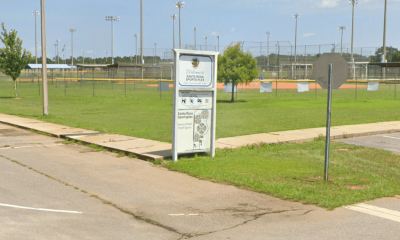
 Rec Sports1 week ago
Rec Sports1 week agoDeputies investigating incident that caused panic at Pace youth sports complex
-
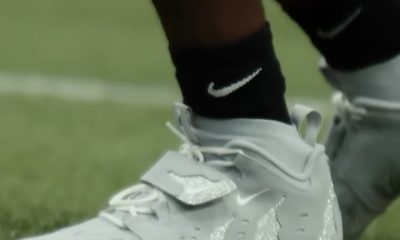
 Fashion1 week ago
Fashion1 week agoThis is poetry in motion.
-

 High School Sports2 weeks ago
High School Sports2 weeks agoAppling County football to forfeit all 10 wins from 2024
-
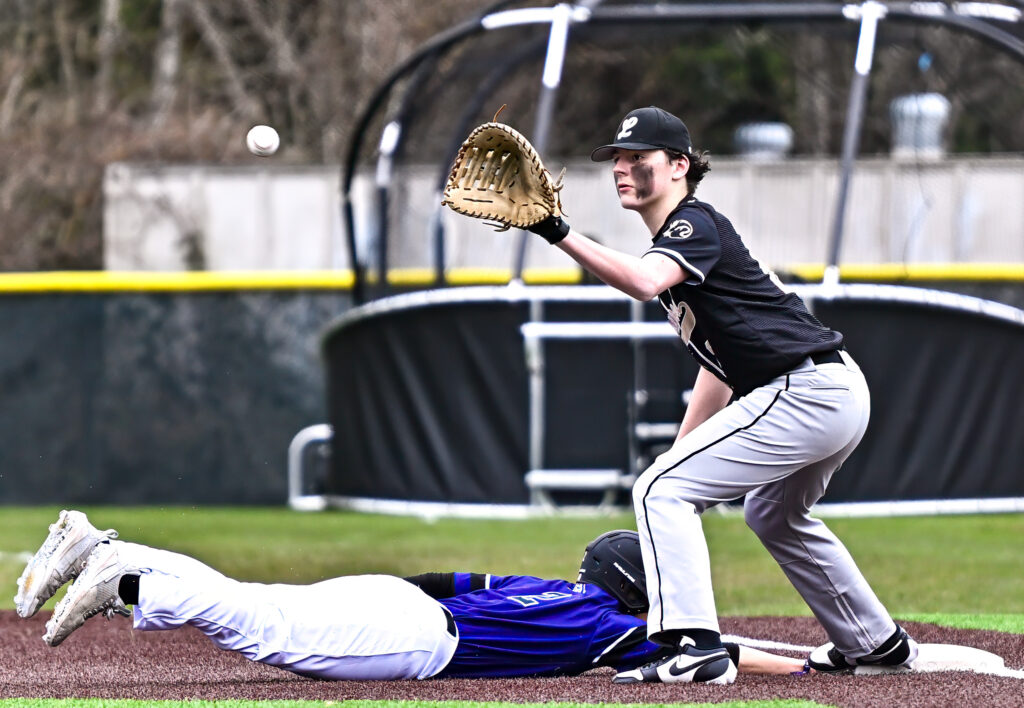
 Sports3 weeks ago
Sports3 weeks agoSports Roundup
-
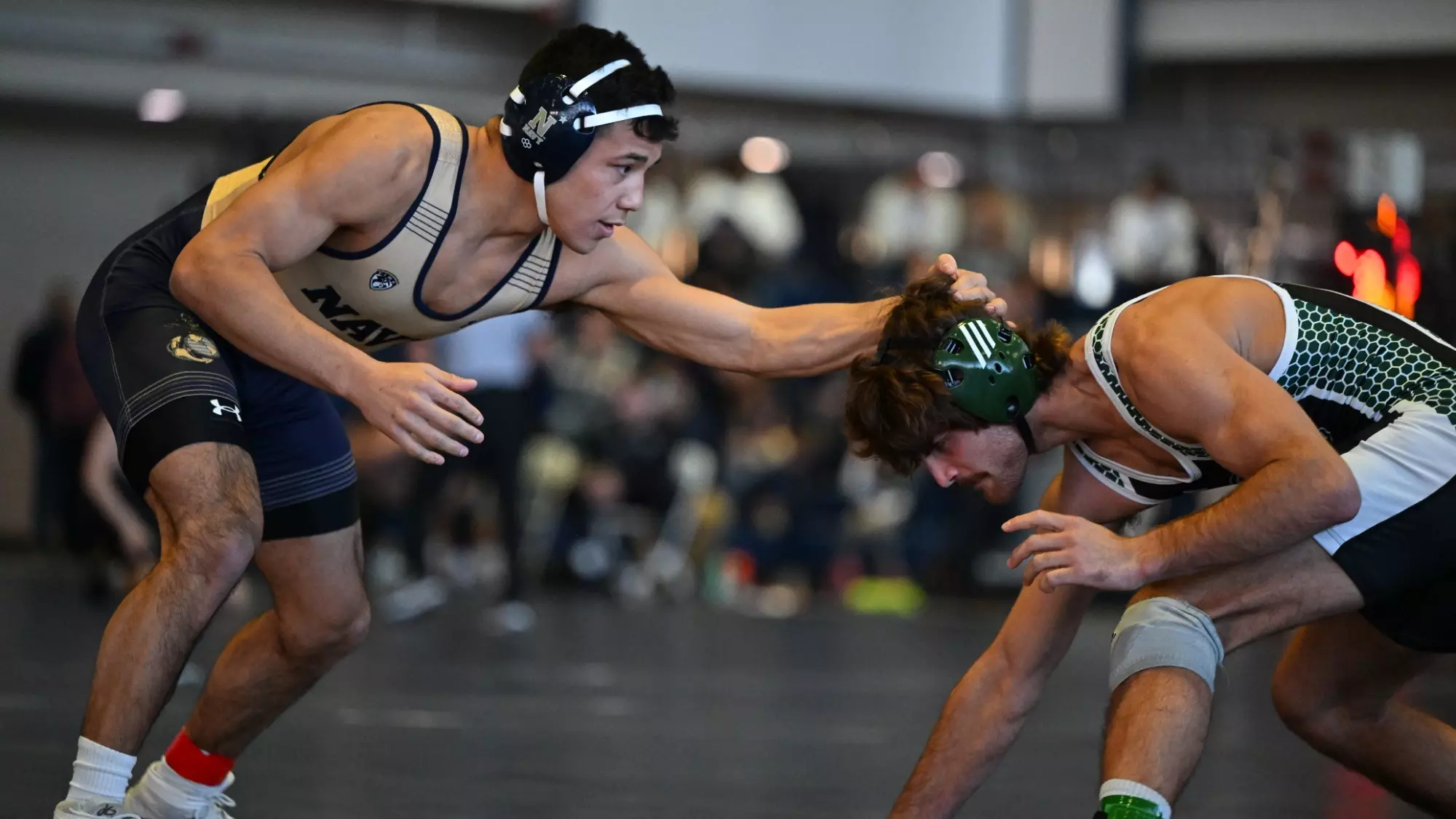
 College Sports2 weeks ago
College Sports2 weeks agoLehigh wrestlers prepare for wrestling U.S. Open
-
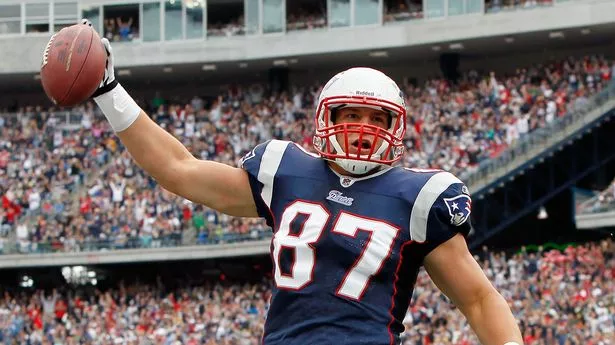
 NIL3 weeks ago
NIL3 weeks agoPatriots Legend Rob Gronkowski Makes Surprising Career Move
-

 NIL1 week ago
NIL1 week agoSave Like a Pro: NIL money isn’t free cash—taxes take a bite! Set aside part of …
-
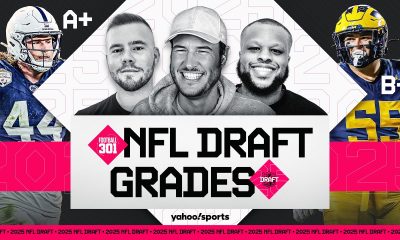
 Sports1 week ago
Sports1 week agoHow to watch Yahoo Sports' NFL Draft Live show
-

 Fashion2 weeks ago
Fashion2 weeks agoWatch Saudi Arabian GP free live stream












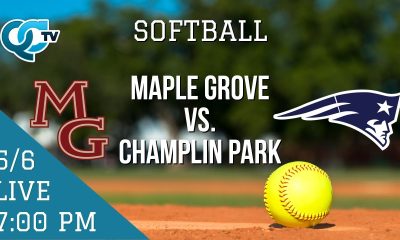



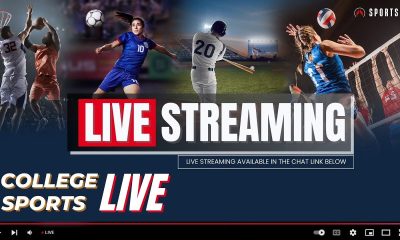

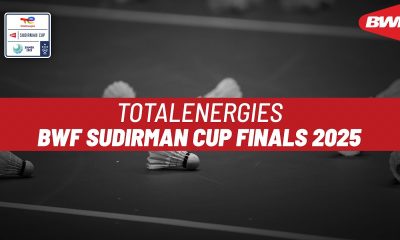

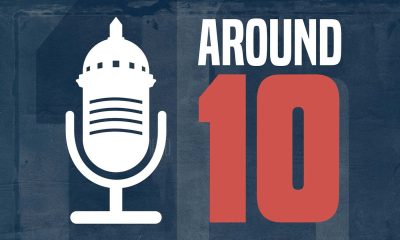



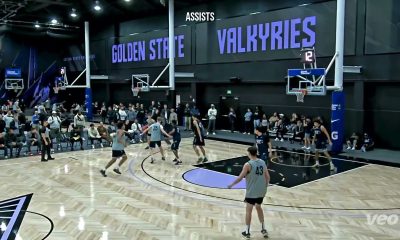

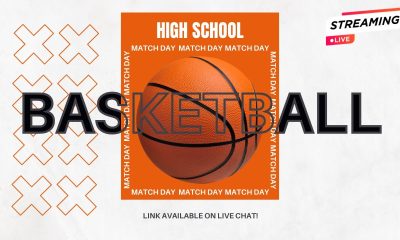

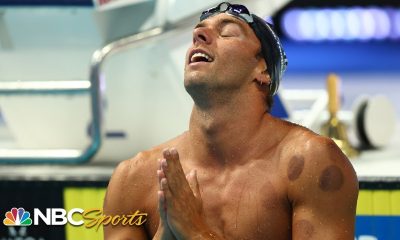










 | April 29, 2025
| April 29, 2025







